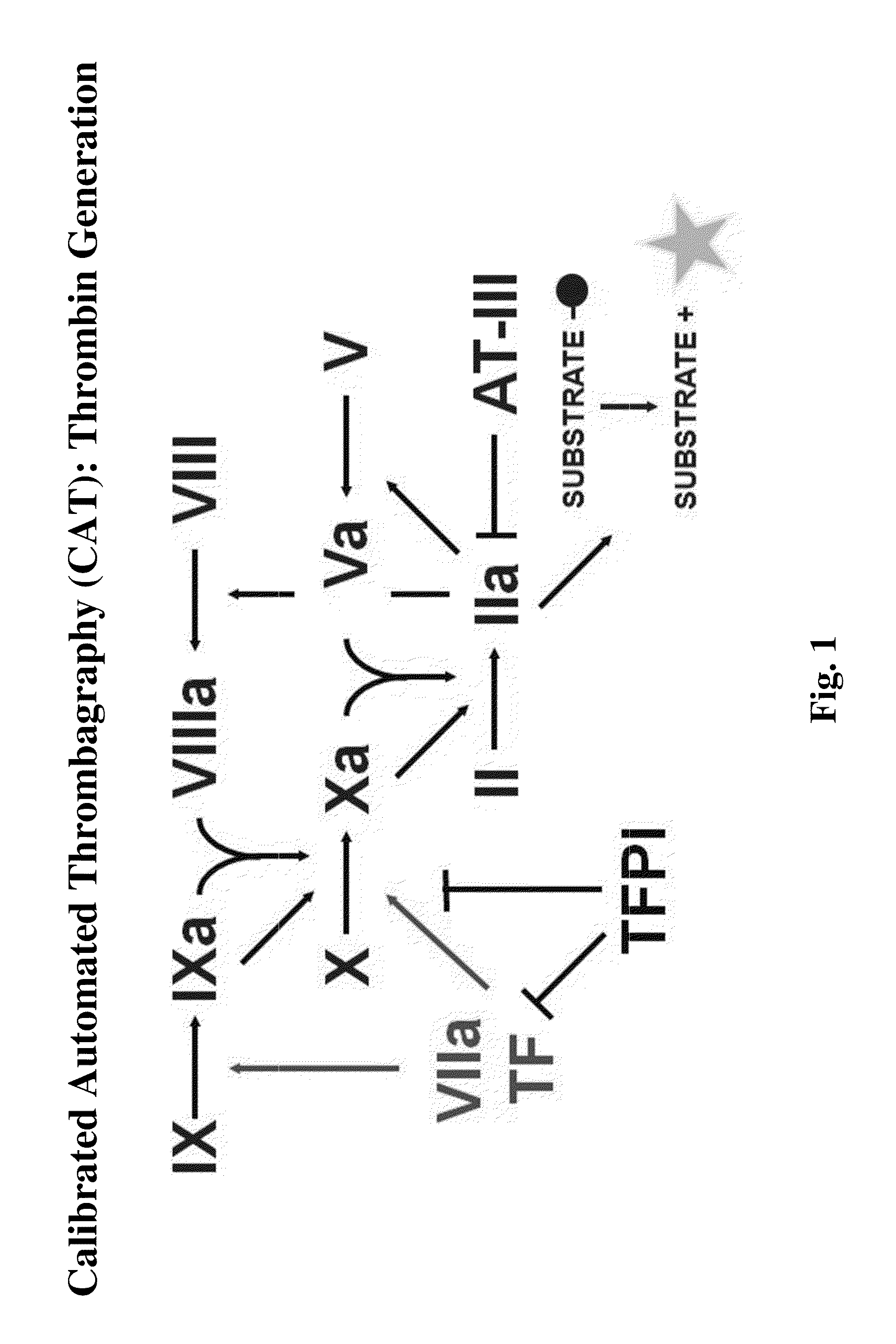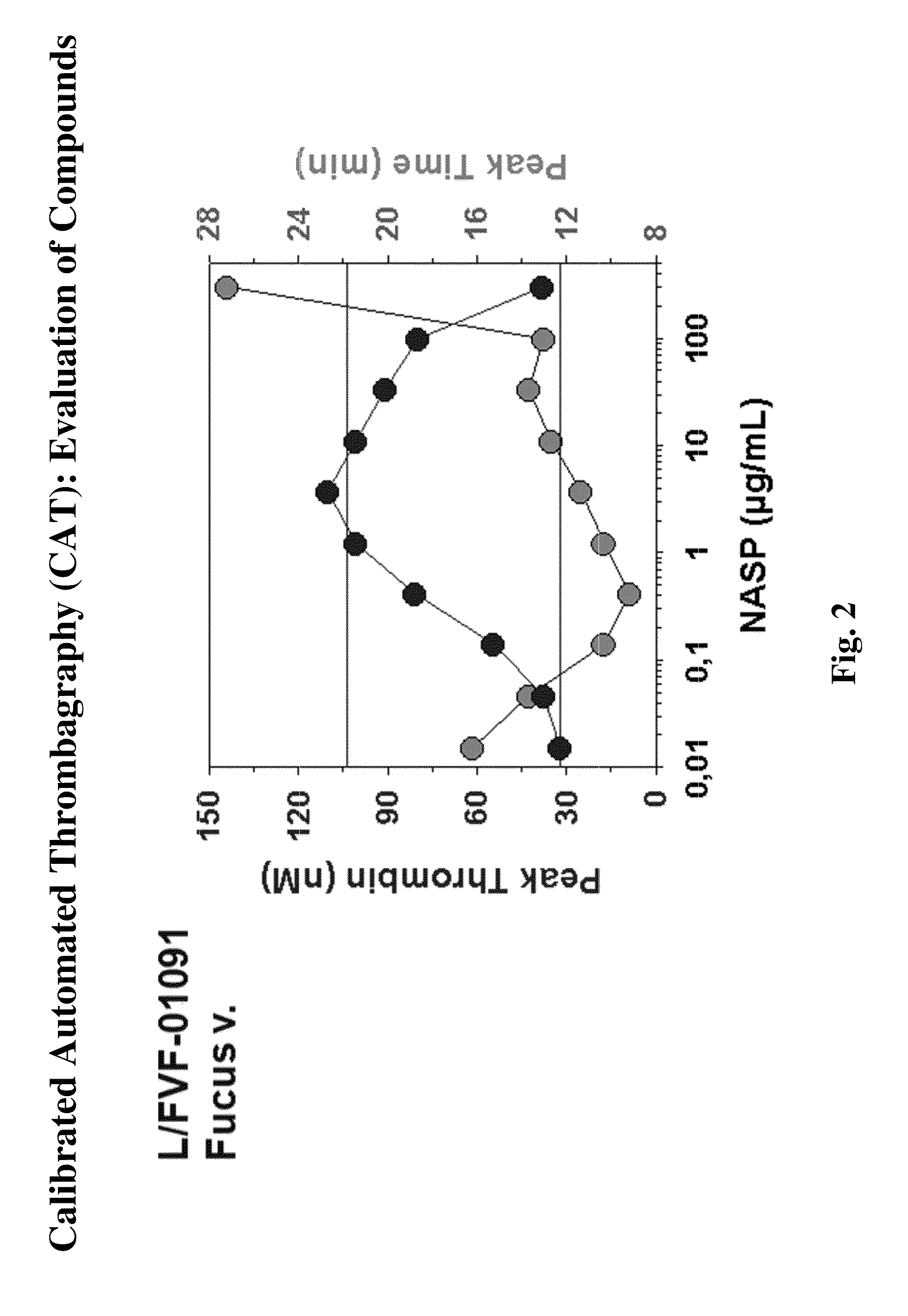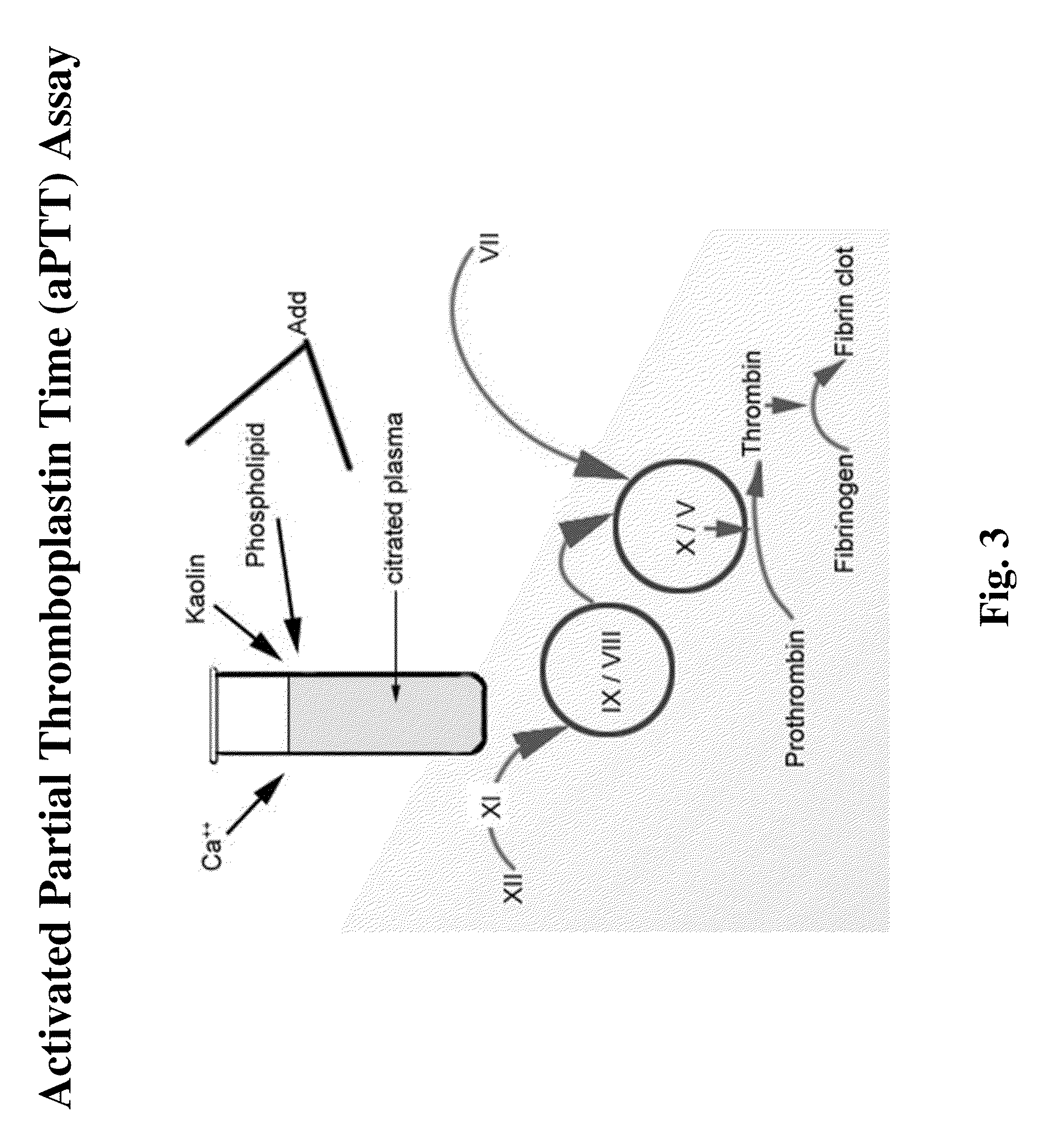Methods and compositions for treating bleeding disorders
a technology for disorders and compositions, applied in the field of methods and compositions for treating bleeding disorders, can solve problems such as localized bleeding and further complicated, and achieve the effect of reducing the time of blood clotting
- Summary
- Abstract
- Description
- Claims
- Application Information
AI Technical Summary
Benefits of technology
Problems solved by technology
Method used
Image
Examples
example 1
Clotting Assays
[0151]The ability of NASPs to promote clotting and reduce bleeding is determined using various in vitro clotting assays (e.g., dPT and aPTT assays) and in vivo bleeding models (e.g. tail snip or cuticle bleeding time determination in hemophilic mice or dogs). Clotting assays may be performed in the presence of compositions of the invention, including NASPs of interest and one or more blood factors, procoagulants, or other reagents. For example, one or more factors can be added, include but are not limited to, factor XI, factor XII, prekallikrein, high molecular weight kininogen (HMWK), factor V, factor VII, factor VIII, factor IX, factor X, factor XIII, factor II, and von Willebrands factor, tissue factor, factor VIIa, factor Va, and factor Xa, factor IXa, factor XIa, factor XIIa, and VIIIa; and / or one or more reagents, including but not limited to, APTT reagent, thromboplastin, fibrin, TFPI, Russell's viper venom, micronized silica particles, ellagic acid, sulfatides...
example 2
Extraction and Purification of a Fucoidan Crude Composition
[0165]Methods for extracting and isolating fucoidans from edible seaweeds, brown algae and echinoderms (e.g., sea urchins, sea cucumbers) have been described in detail in co-pending U.S. patent application Ser. No. 12 / 449,712, filed Feb. 25, 2010, the disclosure of which is herein incorporated by reference. Examples of NASPs and fucoidans of interest are listed in Table 1, below.
[0166]Crude fucoidan Laminaria japonica fucoidan extract (SIGMA) was purified as follows in order to reduce levels of heavy metals and proteins. Water was added to the crude fucoidan material at 40°-45° C. EDTA was then added to remove heavy metals and the pH was adjusted to 6.0. The mixture was stirred for one hour and NaCl was added, the pH was adjusted to 6.0 and the mixture stirred for 30 minutes. Absolute ethanol was added slowly over 75 minutes at 20°-25° C. and the mixture was centrifuged at room temperature to precipitate fucoidan. The supern...
example 3
Procoagulant Mechanism of Fucoidans
[0168]The following experiments were performed and demonstrate a previously unknown procoagulant mechanism of fucoidan. The procoagulant activity of several fucoidans was characterized by calibrated automated thrombography in tissue factor (TF)-dependent experiments and by using coagulation factor-deficient plasmas. Spiking experiments with purified coagulation factors or inhibitory antibodies verified the mechanism identified. Fucoidan-improved thrombin generation (TG) was TF-dependent. Stimulatory activity was most pronounced without TF. Improvement of TG in FXII-deficient plasma excluded the contact system as a target for the procoagulant activity. TG experiments without TF using plasmas deficient in proteins of all three coagulation pathways identified FXI as the most upstream factor responsible for fucoidan-mediated TG. Spiking FXI (30 nM) to FXI-deficient plasma restored fucoidan-mediated TG but adding FXI inhibitory antibodies to normal plas...
PUM
| Property | Measurement | Unit |
|---|---|---|
| molecular weight | aaaaa | aaaaa |
| molecular weight | aaaaa | aaaaa |
| molecular weight | aaaaa | aaaaa |
Abstract
Description
Claims
Application Information
 Login to View More
Login to View More - R&D
- Intellectual Property
- Life Sciences
- Materials
- Tech Scout
- Unparalleled Data Quality
- Higher Quality Content
- 60% Fewer Hallucinations
Browse by: Latest US Patents, China's latest patents, Technical Efficacy Thesaurus, Application Domain, Technology Topic, Popular Technical Reports.
© 2025 PatSnap. All rights reserved.Legal|Privacy policy|Modern Slavery Act Transparency Statement|Sitemap|About US| Contact US: help@patsnap.com



